 Munching more unprocessed plant foods may help keep the middle-aged bulge away (AKA muffin top) , a new study suggests. On the other hand, meat, french fries and sugar-sweetened drinks can help pack on the pounds. The findings suggest that the types of food you choose, not just calories, are important for avoiding age-related weight gain.
Munching more unprocessed plant foods may help keep the middle-aged bulge away (AKA muffin top) , a new study suggests. On the other hand, meat, french fries and sugar-sweetened drinks can help pack on the pounds. The findings suggest that the types of food you choose, not just calories, are important for avoiding age-related weight gain.
Weight gain results from an imbalance between how much energy you take in and how much you expend. Even small amounts of excess weight can increase your risk for disorders such as diabetes, cardiovascular disease, metabolic syndrome and cancer.
A research team at the Harvard School of Public Health, led by Dr. Dariush Mozaffarian and Dr. Frank Hu, sought to gain insights into the changes in people’s lifestyles that lead to gradual, long-term weight gain.
The team followed the lifestyle and dietary habits of 3 large groups of health professionals, totaling over 120,000 people, for 12 to 20 years.
The researchers found several general lifestyle changes linked to weight gain over a 4-year period. Participants who increased their physical activity gained less weight than those who didn't. However, only increases in activity during the period studied produced this result; absolute levels of physical activity (across the lifespan) weren't associated with weight change. People who slept for less than 6 hours a day or more than 8 hours gained more weight. Increases in TV-watching led to an average gain of about a third of a pound for every hour of TV watching per day.
Food choices also affected weight. Potato chips, sugar-sweetened drinks, processed meats and unprocessed red meat were each linked to weight gain of about a pound or more. Eating more french fries led to an average gain of over 3 pounds. Eating more refined grains and sweets or desserts led to about half a pound of weight gain. By contrast, eating more vegetables, whole grains, fruits, nuts and yogurt was linked to reductions in weight over a 4-year period. Yogurt led the pack, with an average of 0.82 pounds of weight lost.
The researchers suggest that highly processed foods may not satisfy hunger as well as less processed, higher fiber foods, causing a higher total intake of calories. “The idea that there are no ‘good’ or ‘bad’ foods is a myth that needs to be debunked,” Hu says.
This was an observational study, in which people were asked to recall the foods they ate. While the findings are compelling, future controlled studies will be needed to confirm whether eating particular foods can affect long-term weight gain more than simply counting calories. The study appeared in the June 23, 2011, issue of the New England Journal of Medicine.

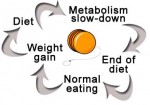 Have you been losing weight and despite staying on your diet and exercising, your weight suddenly stays the same? Don't get discouraged, it's normal for weight loss to slow down and even stop. This phenomenon is called the "weight-loss plateau" and it's more common than you think. Even the best planned weight loss program can become stalled.
Have you been losing weight and despite staying on your diet and exercising, your weight suddenly stays the same? Don't get discouraged, it's normal for weight loss to slow down and even stop. This phenomenon is called the "weight-loss plateau" and it's more common than you think. Even the best planned weight loss program can become stalled.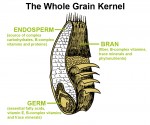 We all keep hearing that we need to eat more whole grains, but does everyone know what they are? It's pretty obvious they are NOT that swishy white bread that we used to make dough balls out of when we were kids (to use for bait while fishing!). Whole grains are cereal grains that consist of the intact, ground, cracked or flaked kernel, which includes the bran, the germ and the inner most part of the kernel (endosperm). Examples of whole grains include whole wheat, oatmeal, whole-grain cornmeal, brown rice, whole-grain barley, whole rye, and buckwheat.
We all keep hearing that we need to eat more whole grains, but does everyone know what they are? It's pretty obvious they are NOT that swishy white bread that we used to make dough balls out of when we were kids (to use for bait while fishing!). Whole grains are cereal grains that consist of the intact, ground, cracked or flaked kernel, which includes the bran, the germ and the inner most part of the kernel (endosperm). Examples of whole grains include whole wheat, oatmeal, whole-grain cornmeal, brown rice, whole-grain barley, whole rye, and buckwheat.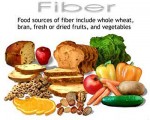 High-fiber diets during early adult years may lower lifetime cardiovascular disease risk
High-fiber diets during early adult years may lower lifetime cardiovascular disease risk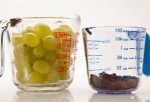
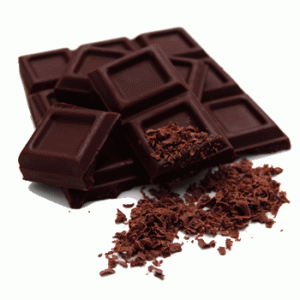 Middle-aged and elderly Swedish women who regularly ate a small amount of chocolate had lower risks of heart failure risks, in a study reported in Circulation: Heart Failure, a journal of the American Heart Association. The nine-year study, conducted among 31,823 middle-aged and elderly Swedish women, looked at the relationship of the amount of high-quality chocolate the women ate, compared to their risk for heart failure. The quality of chocolate consumed by the women had a higher density cocoa content somewhat like dark chocolate by American standards. In this study, researchers found:
Middle-aged and elderly Swedish women who regularly ate a small amount of chocolate had lower risks of heart failure risks, in a study reported in Circulation: Heart Failure, a journal of the American Heart Association. The nine-year study, conducted among 31,823 middle-aged and elderly Swedish women, looked at the relationship of the amount of high-quality chocolate the women ate, compared to their risk for heart failure. The quality of chocolate consumed by the women had a higher density cocoa content somewhat like dark chocolate by American standards. In this study, researchers found: